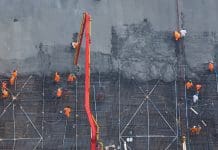A report by Currie and Brown states that the UK construction industry still needs more clarity and stability from the new Labour government
The report highlights that there is great potential for the future of the UK construction industry, but that stability from the government is still desperately needed.
The construction industry needs stability
One of the factors leading to this statement is some of Rachel Reeves’ initial speeches.
There is a somewhat contradictory nature between her first speech, promising some very welcome planning reforms, and one of her later speeches in which many major construction projects were cancelled.
This continues the construction industry’s lack of stability and clarity, as it is not yet clear in which direction it should go.
The future can be bright
While the report shows a mild decline of 0.6% at the end of 2023 and start of 2024, the anticipation is that the industry will grow.
However, it will still take investments, particularly into health, education, and infrastructure, to ensure stability and maximise this growth.
There will also likely be a heavier reliance on private investment.
Part of the lack of clarity for the construction industry, however, is in the upcoming regulation changes. The sooner that these are made clear, the sooner the industry can adapt to them and innovate.
Finally, labour shortages must be addressed if the industry is to thrive.
Currie and Brown comment on their findings
Nick Gray, Chief Operating Officer for UK and Europe at Currie & Brown, said: “The Labour government’s legislative priorities provide a crucial opportunity to unlock the potential of the construction industry.
“However, cancelling or postponing capital projects hinders the potential for these initiatives to drive growth, create jobs, and meet the needs of businesses and communities. Whilst the chancellor’s announcement of a multi-year spending review will provide some clarity, it is now crucial for the government to collaborate with industry – at national and local levels – to advance these projects and explore new funding models.”














